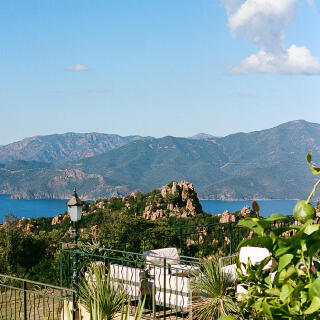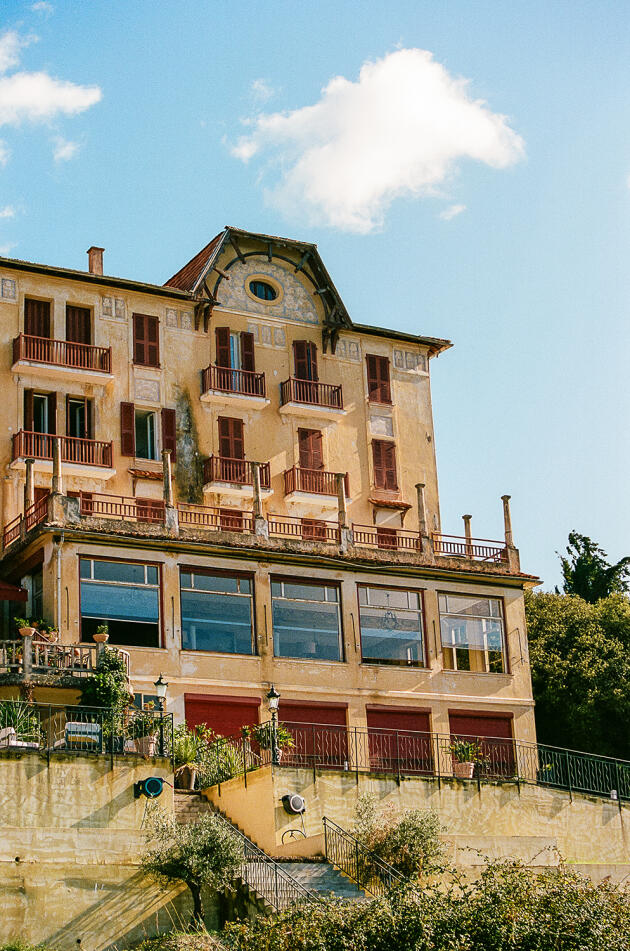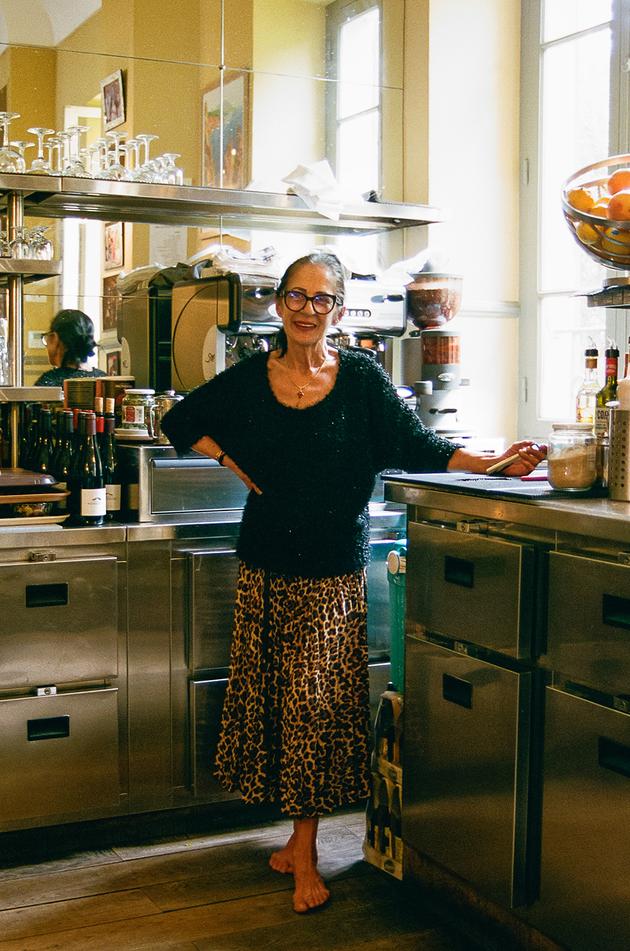


Les Roches Rouges, a Corsican hotel with a soul
FeatureWith its 180-degree view of the sea, this century-old establishment clinging to the rocky inlet of Piana, in southern Corsica, has been restored over the years. Revered by loyal clientele, madly in love with its listed façade, the hotel has a guesthouse atmosphere.
"Les Roches Rouges, hello!" When Mady Dalakupeyan answered the phone, the accent sang and the voice betrayed the smoker. The hotel owner, the soul of a soulful place, stood behind the bar, a strategic location that doubles as a reception desk, between the coffee machine, the rows of glasses on stainless steel shelves, the walls lined with family photos, the hand-filled reservations booklet, the locker for guest cards and passports and the box containing the staff's cell phones during service.
First up and last to bed, Dalakupeyan had already prepared the coffees and cleared away the breakfast. Later in the afternoon, she served tea, took the first-aid kit to a customer who'd fallen during a hike and then it was time to fill the ramekins with olives for the aperitif and light the Jonc des marais lamps. At sunset, before orchestrating room service, she also brought out the lanterns in front of the Belle Epoque building, on the side of the immense terrace opening onto the spectacular backdrop of the Gulf of Porto and the famous red rocks of Piana. With their tortured pink granite forms, these calanche ("rocky inlets" in Corsican) have been a UNESCO World Heritage Site since March 1983.
With her lean silhouette and long jet hair, thick black-rimmed glasses and dark lipstick, 74-year-old Dalakupeyan is a hard-working woman. She grew up here, in this pretty village perched between Ajaccio and Calvi, where her mother ran a grocery store. "There were only three telephones in the village. One at the doctor's, one at Les Roches Rouges and one at our house. When the hotel ran out of sugar or butter, they'd call my mother and I'd bring the groceries. But I wouldn't go into the reception area. I was 7 or 8 years old, and sometimes my girlfriends and I would stand on the low wall to watch the comings and goings. But we never went downstairs. In the late 1950s, this was still a luxury hotel."


Opened in 1912 under the impetus of Ajaccio's Sylvestre Frassetto, promoter of the tourist office that would work to develop tourism on the Isle of Beauty – an expression that first appeared in the 19th century – the establishment was sold in 1925, then remodeled following its acquisition by Corsotel, a subsidiary of the PLM (Compagnie des Chemins de Fer de Paris à Lyon et à la Méditerranée). This company, which offered a road itinerary served by coach in addition to the rail lines, also owned stopover hotels close to picturesque natural sites.
Following in the footsteps of winter tourists (British in particular) on the Côte d'Azur during the Belle Epoque (1871-1914), vacations in Corsica attracted a clientele of wealthy tourists and aristocrats. From 1928 onward, all these beau monde descended on the grand Hôtel des Roches Rouges. It was extended by a new wing (doubling the number of rooms), with a huge protruding dining room, punctuated by columns with elaborate pilaster heads, walls adorned with a frieze of floral and fruit motifs and a ceiling highlighted by an elaborate stucco cornice. A painting by artist Adolphe Cossard (1880-1952) depicting a view of Calvi and its Grand Hôtel (built in 1913) decorates the vast room, now a listed Historic Monument, and picture windows open wide onto a 180-degree landscape: on the left, the village, on the right, the calanche, in the middle, the sea.
You have 65.59% of this article left to read. The rest is for subscribers only.
